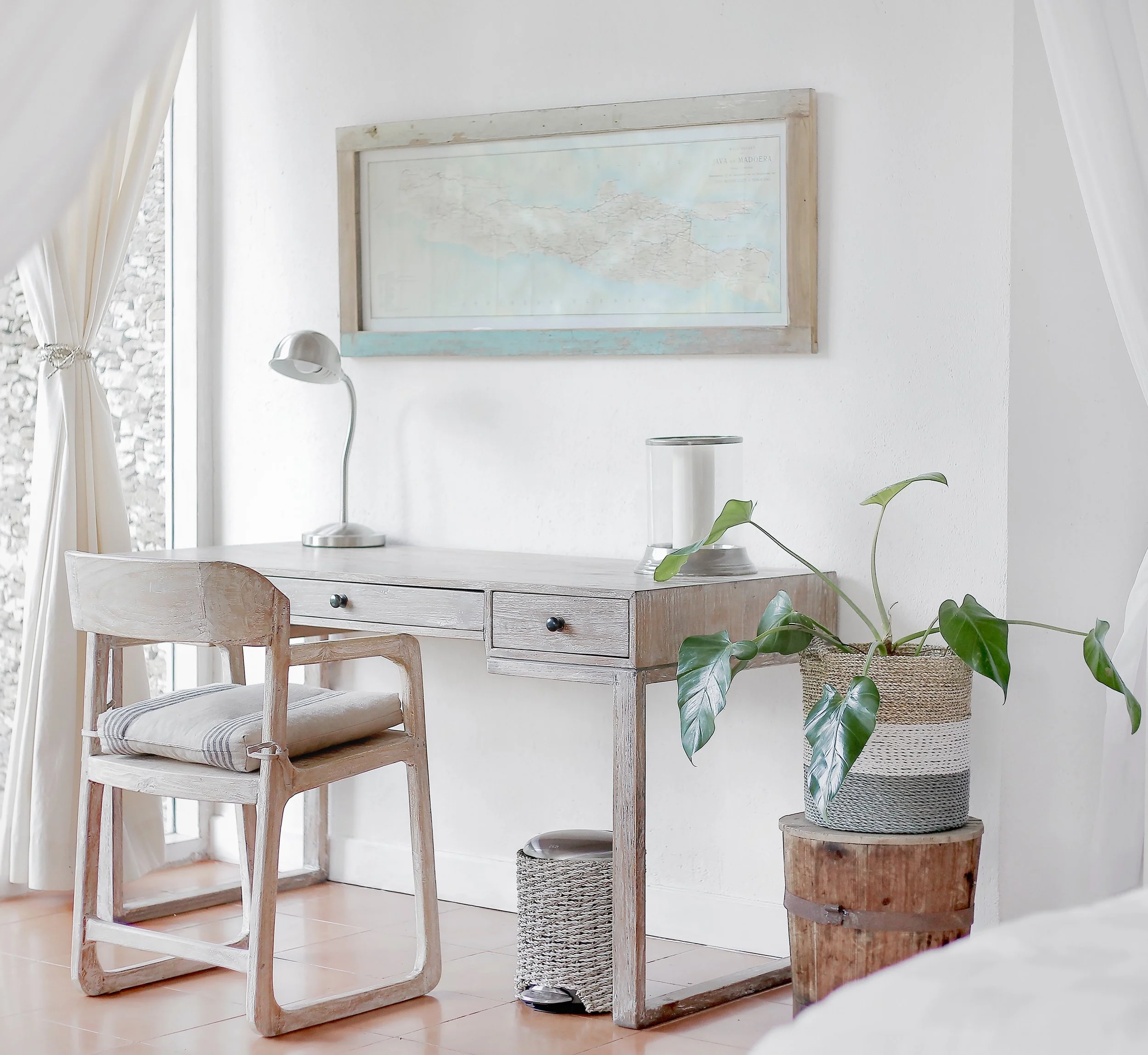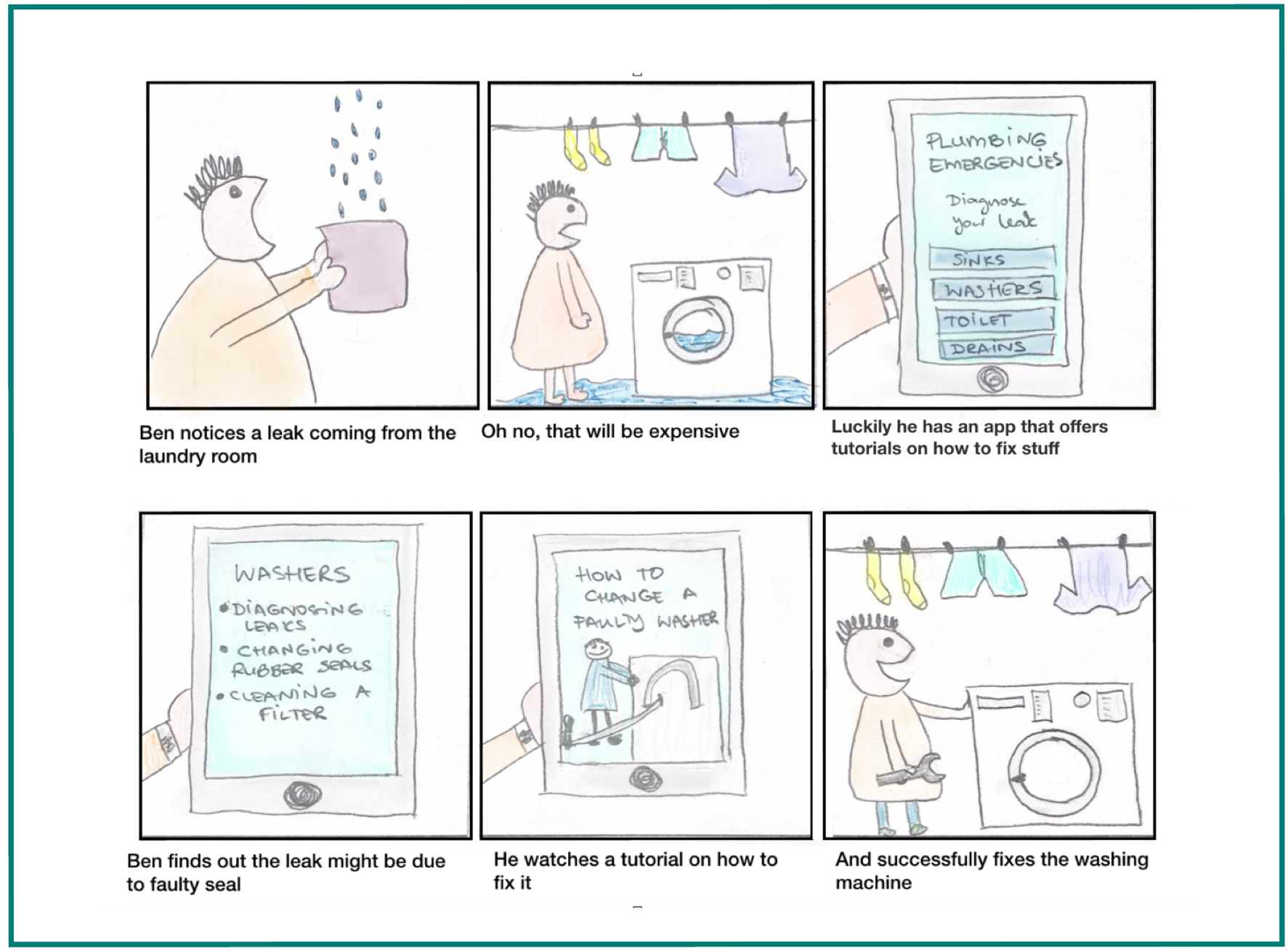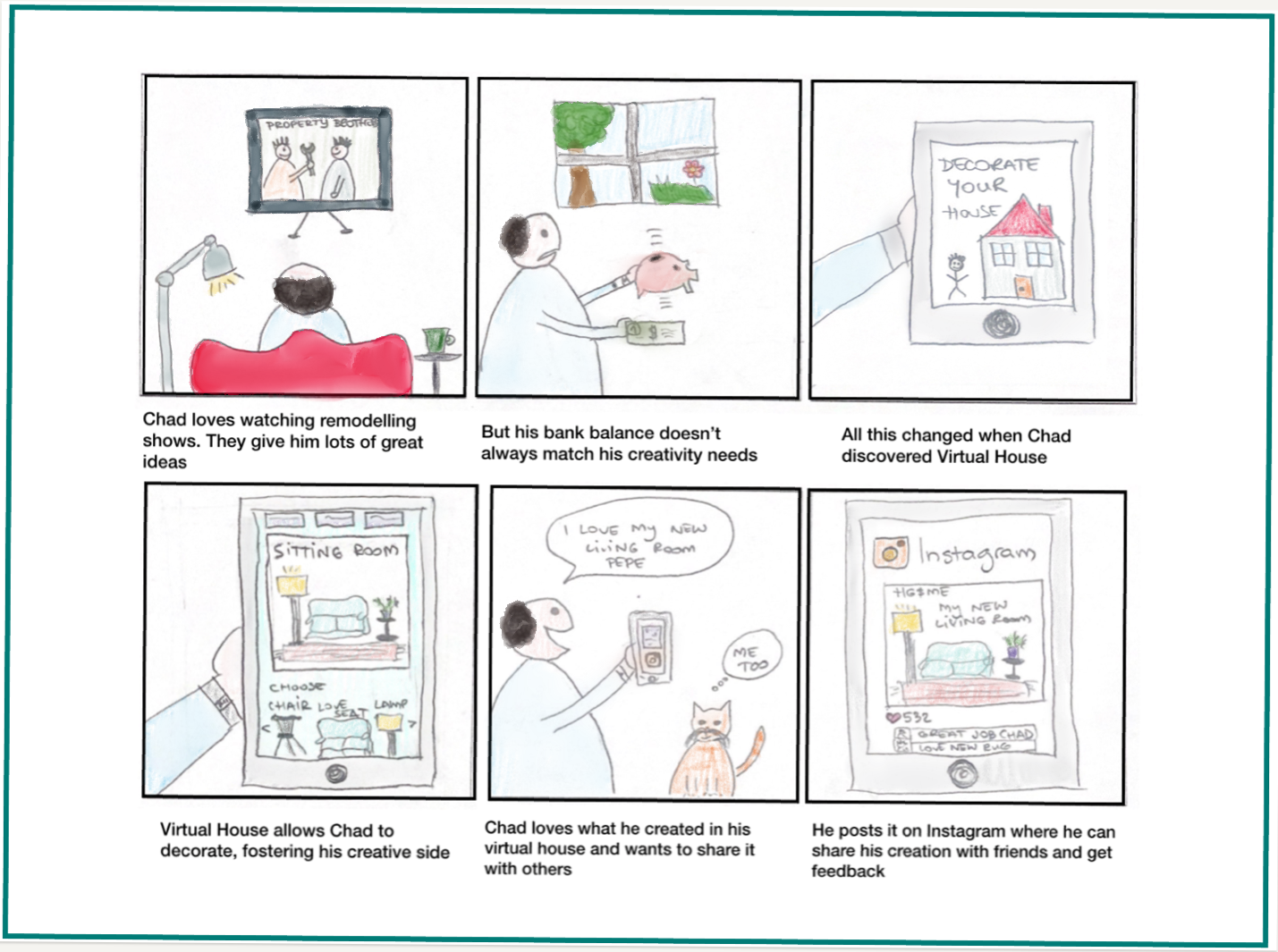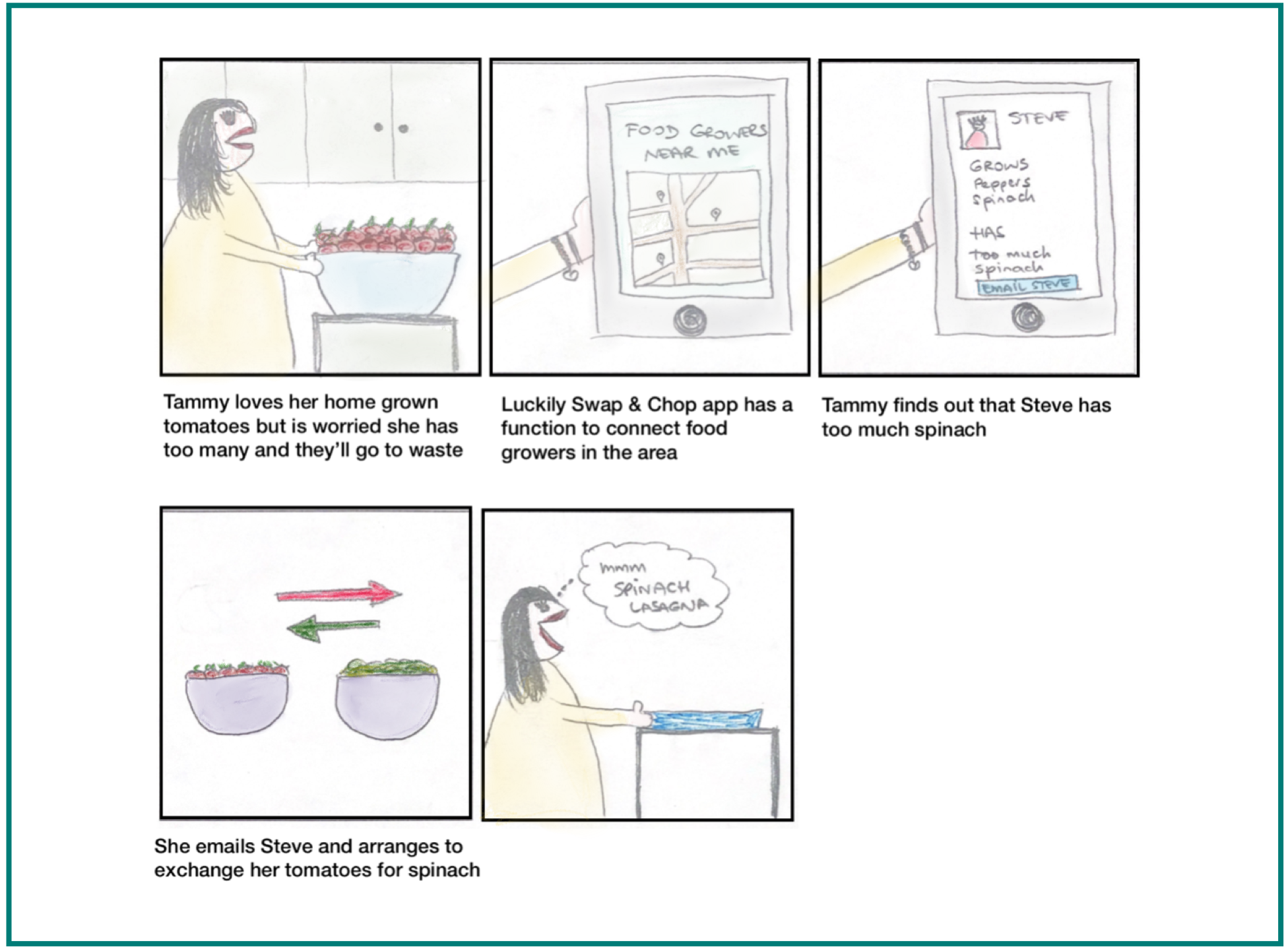Home renovation mobile app case study
My role on this project: Research, concept testing and business strategy
Timeline: 2 weeks
TV shows and online content featuring home improvements, home buying and selling, home styling or DIY are increasingly popular and HGTV is leading this space. Could there be a need for a mobile app that could tap into this landscape and offer something practical or delightful to potential users.
Key insights
Home is an expression of one’s identity
There is a disconnect between reality and fantasy
aspects of the remodelling showsInspiration motivates me to be creative
Labor leads to love- teaching lost skills
Credibility of the advice is important
Additionally, several business opportunities emerged
through concept testing and brainstorming.
After conducting primary and secondary research and extensive concept testing, several important insights emerged, leading to an idea for a mobile app which users can use to decorate virtual rooms with real furniture, which they would be able to purchase through the app.
Research rationale
Several different avenues of secondary and primary research were pursued to better understand the industry:
Academic literature review - to understand the phenomenon
Review of online content and social media - to explore what users are writing and talking about and learn about the industry
Review of potential competitors - to see what they offer and how we can be different
Interviews with people who watch such shows - to explore what they think, feel and want and see what we can offer them
Diary studies - asking participants to record thoughts and feelings while watching the show in order to capture visceral reactions and emotions
Affinity mapping - to synthesise the research and help concept creation
Concept testing - to establish which concepts resonate with potential users
Home is an expression of one’s identity
Review of academic literature pointed to the fact that making and maintaining an attractive home is increasingly important to people. It is seen as a way of self-expression and tied to identity.
Interior design is seen as a way of self expression
It is also a sense of pride. It’s important to be the first to set the trend or introduce an idea. This may explain why people share their remodelling ideas or triumphs with others online.
“The argument is that with the loss of family, class and local community, the individual in late modernity has to organize, plan and secure his or her own life, and the individual has to stage and create his or her own identity. One way of doing this is obviously by means of interior design, as we know from home-decoration magazines.”
There is a disconnect between reality and fantasy aspects of remodelling shows
Superficial veneer of luxury and glamour
Researching people’s opinions online, a discourse around trustworthiness of such shows began to emerge. Many people felt these shows are staged. Online stories of participants that featured in such shows also echoed this. Interview participants too, questioned unrealistic budgets set in such shows.
“The high home values and budgets for buying feels very out of touch for what people can generally afford.”
Expectation vs reality
Some people expressed frustration at such shows or online content, due to their reality not being aligned with what they were watching. Through our diary study, we found that sometimes these shows bring out feelings of envy and regret.
But not everybody felt this way. Viewers under 30 said they enjoy it, even though it is often unrealistic.
“I guess for millennials, it feels like a fantasy. We love to see the things that we can’t afford, given that we’re crammed into 300-square-foot apartments and have debt.”
Inspiration motivates me to be creative
Home projects
Through interviews, we found that these types of shows can inspire people to do their own projects.
“These shows nourish my creative side at a time where i don’t have the means to carry out these sorts of projects at this time. Small details in the show inspire home decor and holiday craft projects.”
Labor leads to love - teaching lost skills
Doing renovations other than hiring someone to do it was increasingly important to people, as it adds to feelings of identity and pride in their home.
Ikea effect
People who invested their own time in remodelling their home, placed a great value on what they created. This is also known as the Ikea effect, a cognitive bias that makes people place disproportionately high value on things they created or built themselves.
“When instant cake mixes were introduced in the 1950’s as part of a broader trend to simplify the life of the American housewife by minimizing manual labor, housewives were initially resistant: the mixes made cooking too easy, making their labor and skill seem undervalued. As a result, manufacturers changed the recipe to require adding an egg.”
Inspiring the generation by teaching lost skills
These key insights inspired several concepts for the new app, some addressing the desire for inspiration and self-expression within one’s home and some addressing the need for self-sufficiency. Interview participants also expressed a desire to be more self-sufficient, to be able to fix stuff around the house or grow food.
“I would be interested in a gardening show, and think that it could be very beneficial to show people how they can grow their own produce and herbs even when they don’t have a lot of space. This is becoming a lost skill and might inspire a whole generation.”
Concept testing
Several concepts were tested in a rapid succession by showing participants a story board of each concept and asking them to talk freely about the concept, sharing their thoughts, feelings and opinions.
Concepts tested (via storyboards)
Home gnomes (Pip and Chip teach about trees and plants)
Home gnomes (Pip and Chip suggest planting options for your garden)
Fix Tricks (expert tutorials on fixing things around the house)
Plan Planet (integrated eco-friendly advice and suggestions)
Smart food (advice on what to do with extra grown food)
Pro Check (budgeting advice)
Pro Check (expert advice on how to fix projects gone wrong)
Swap and Chop (connects those who grow food so they can swap produce)
Virtual House (allows users to create virtual living spaces with real furniture)
Safe baby (advice on how to make one’s home safe for children)
Safe pet (advice on hazards for pets in the home)
Grow your own (advice on growing own food)
Credibility of the advice is important
Participants liked several concepts but also highlighted certain issues, such as credibility or complexity of the advice being offered.
Users don’t want just another app - they want advice they can’t easily Google
Safe pet and safe baby concepts also raised the issue of credibility, despite being deemed very desirable.
Gardening advice is an intricate business, what grows in my garden may not grow in someone else’s - who is the expert? If this advice was simply superficial gardening advice they could find anywhere.
The same was found for DIY advice. Users did not immediately trust it would be good advice, although the idea was appealing
Other concepts, were well received but limitations which would prevent users from using such an app came through, such as lack of time for growing or swapping food.
Creativity that is grounded in reality
Through concept testing, Virtual House app resonated with potential users and many requested to be able to decorate with real furniture, which they could purchase if they like.
The concept chosen for this project was “Virtual House”.
From the research and concept testing, I created a persona,
Chad, who is interested in expressing his creativity by decorating his ‘virtual’ house.
Divide between fantasy and reality when
it comes to remodeling shows resonated with users
One of our concept testing participants pointed this out when evaluating the idea of the Virtual house - an app that allows users to decorate their virtual rooms with real furniture.
“If he doesn’t have the money though, and he has this app…It’s kinda nice that it satisfies his needs in some ways but at the same time, he will not be able to reach that and will he not be more sad? That he won’t be able to access those products.”
How might we help Chad attain the products he wants to purchase for his house?
I also created Chad’s hypothetical user journey, to visualise how and where in his journey we could help.
chad’s user journey
These tools were created to guide the design team to create an app which would allow users to decorate with real furniture, which they could purchase if they wish.
Bringing reality a bit closer…
We felt that the feature that allows users to be notified of any price drops would address the issue of the divide between reality and fantasy.
Possible features
Multiple rooms which users can decorate with
real furnitureAbility to buy furniture used within the app
Sharing creations with friends
Price drop notifications
Editorial articles
Collaborations (e.g. users invite other users to help
them decorate their spaces)Ability to set room sizes to mimic real spaces
Business opportunities
The app would feature real furniture and customers would be notified of price changes
Engaging users with price notifications may lead to increase in sales, while ‘no adverts’ model offers an opportunity for greater user satisfaction.
Identified several business opportunities for this app idea
Pay to feature items
Commission on items purchased through the app
Pay to feature editorial articles
Pay to feature promotions
Pay to have items recommended
Recap and the next steps
The goal of this project was to develop an idea for an app that would tap into increasingly popular space of home renovations and DIY. Also to test the market - is there actually a desire to have an app within this space.
Initially, potential users loved many concepts but for many, raised the issue of how credible the advice would be. They felt the app should give them a little bit extra.
The idea of the virtual house
Idea that one could have an app that allows for creative expression was liked by all concept testers.
It promotes creativity but can also be used in a functional way: to experiment with different furniture when planning to redecorate. Therefore it seems like a great idea.
Opportunity to delight users and meet business goals
This idea also has a great business potential. The next steps would be to do initial designs and test them with users.
Fun project
This was an extremely fun project I had lots of fun brainstorming and coming up with different concepts.















